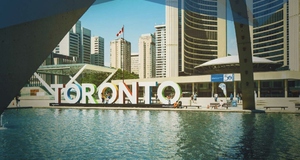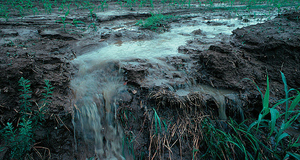From ChinaThe Chinese Pollution Problem and the Politics of "Airpocalypse"
By
2014, Vol. 6 No. 01 | pg. 3/3 | « Lack of Incentives: Growth at All CostsSince the beginning of China’s economic revolution, Chinese officials have seen growth of the economy in a diametric view from environmental degradation. Growth at all costs is and has been the slogan for the last thirty years. Few local officials paid attention to environmental protection laws, secure in the knowledge that environmental protection laws, secure in the knowledge that environmental protection was not a central priority, and focused instead on raising the economic standards of their local citizens. Moreover, the imbalance between the rate of environmental degradation and pollution and the country’s capacity to respond was both understood (however imperfectly) and accepted by many.81 When local officials are chosen, they are measured by the economic growth in their localities. With this expectation, the environment is further neglected, as all resources are put in projects that yield economic growth. “For a lower-level cadre to receive his bonus and to have a chance at promotion, the most important thing to do is to please the party secretary at the next higher level”82, and in essence, put the well-being of citizens on the back burner. With emphasis placed on these statistics, local officials lack incentives to invest in pollution control.To measure the cost of environmental degradation that has been incurred relative to economic growth, MEP uses a figure known as the Green GDP that measures the amount and percentage of the Gross Domestic Product that was lost due to environmental pollution and degradation. In 2004, environmental pollution in China had a cost of $64 billion, which equated to “3.05 percent of its GDP that year”83. China’s GDP that year was $1.93 trillion84. Many consider this publicized cost of environmental degradation to be very low and frankly, misleading. The World Bank conducted its own study accounting for the very same variables that China used and the World Bank concluded “that environmental degradation and pollution cost the Chinese economy the equivalent of 8-12 percent of GDP”85. Since 2004, the price of environmental degradation has increased to “$230 billion in 2010, or 3.5 percent of the nation’s gross domestic product – three times that in 2004”86. These statistics are very telling, and imply that the actual economic growth rate is smaller than stated. Many experts believe that the only way the Communist Party of China can stay in control and legitimize its power is by having an astronomical economic growth rate, or one can assume that the Chinese government veils the real statistics to appease citizens. China’s leaders have long been “well aware that they were trading environmental health for economic growth. The maxim “First development, then environment,” was a common refrain”87. It is safe to assume that the citizens of China have become less patient with their government’s tactics, in lieu of diminishing quality of life, and have taken to the streets in the form of protests. In 2006, MEP head “Zhou Shengzian announced that there had been 51,000 pollution-related protests in 2005, amounting to almost 1,000 protests each week, a 29 percent increase over 2004. People from all across China take to the streets because few citizen complaints about the environment are resolved satisfactorily”88. Protests in huge numbers like this are a litmus test for the government. They serve as reality checks that the web of bureaucracy that is formed by the absence of enforcement on all levels, to the seeping of corruption down to the root level, to the rift between the central and local officials caused by an archaic organizational structure, are impeding the progress that will form a greener China. They are hindering the progress that is made on paper in the offices of lawmakers, but fails to make it in the real world. The Chinese Pollution Problem: Where to Now?The politics behind air pollution are complex. With a powerful bureaucracy, China is struggling to find the balance between decentralization and centralization, which in return, is affecting the implementation of its environmental protection policies at local levels. Rational actors like corporations and government officials are doing what is in their individual best interest, either maximizing profits or taking the necessary steps in protecting their jobs. The web of bureaucratic organizations has created disorder, which has prompted disincentives for proper policy implementation along with incentives to engage in corrupt activities. Both of these factors have impeded greater protection of the environment. Moreover, the interconnected and intertwined nature of these factors has led to a persistent cycle that plagues China’s environment and its citizens. Is there anything that can be done to save China’s environment? The answer is not so simple. The first and most obvious step would be to have a top-down bureaucratic reform. This transformation would aid the implementation of rules and regulations already in place. China would also need to heavily invest in projects that not only protect the environment, but also rejuvenate areas that already have been damaged by pollution. China has taken steps in the right direction as it “plans to invest 1.7 trillion yuan ($277 billion) to combat air pollution over the next five years.”89 With significant efforts to boost renewable energy, currently “energy such as natural gas and hydropower… account for only 2.7 percent and 5.8 percent…China’s leaders have also set ambitious targets to increase the role of renewables in their energy mix to 15 percent by 2020.”90 These are just a few examples of positive efforts that have been recently made in attempt to rectify the wrongdoings of the past. China is on the right path, but protecting the environment is something that cannot be achieved in one night. There are a plethora of questions that China needs to address now and there are a many bumps that it will encounter on the way, particularly if the inefficient and often corrupt bureaucratic system does not undergo considerable reforms. References"Addressing China's Water Scarcity: Recommendation for Selected Water Resource Management Issues." The World Bank. N.p., n.d. Web. 7 Nov. 2013. . "'Airpocalypse' Hits Harbin, Closing Schools." Sinosphere. The New York Times, n.d. Web. 07 Nov. 2013. . "China & India Are Building 4 New Coal Power Plants – Every Week." The Global Warming Policy Foundation (GWPF). N.p., n.d. Web. 07 Nov. 2013. . "China Finds 100,000kg of Poisoned Dead Fish in River." The Guardian. N.p., n.d. Web. 07 Nov. 2013. . "China to Invest $277 Billion to Curb Air Pollution: State Media." Scientific American. N.p., 24 Aug. 2013. Web. 14 Aug. 2013. . "China's 2004 GDP Ranks 6th in World Economy." China's 2004 GDP Ranks 6th in World Economy. N.p., n.d. Web. 10 Nov. 2013. . Economy, Elizabeth. The River Runs Black: The Environmental Challenge to China's Future. Second ed. Ithaca: Cornell UP, 2004. Print. Fewsmith, Joseph.The Logic and Limits of Political Reform in China. Cambridge, [England: Cambridge UP, 2013. Print. Finamore, Barbara. "Curbing Air Pollution in China: Eliminate Dirty Diesel Fuel." Natural Resources Defense Council Switchboard. N.p., n.d. Web. 7 Nov. 2013. . "Global Comparison: Fuels." Transportpolicy.net. N.p., n.d. Web. 07 Nov. 2013. . Graham-Harrison, Emma, and Vivi Lin. "China Cancer Village Pays Ultimate Price for Growth." Reuters. Thomson Reuters, 10 Dec. 2008. Web. 07 Nov. 2013. . "Greenpeace Report Warns of Pollution from Chinese Coal Power." Top News, Latest Headlines, World News & U.S News. N.p., n.d. Web. 07 Nov. 2013. . Lee, Carmen. "High Sulfur Fuel Responsible for China's Air Pollution, Sinopec Chairman Says." Gasgoo Global Auto Sources. N.p., n.d. Web. 7 Nov. 2013. . "Mask and Smog Apps in Polluted China." Irish Times. N.p., n.d. Web. 7 Nov. 2013. . "Millions Face Arsenic Contamination Risk in China, Study Finds." The Guardian. N.p., n.d. Web. 07 Nov. 2013. . "Oil Giants Fail Environmental Evaluation." China Daily. N.p., n.d. Web. 07 Nov. 2013. . Osnos, Evan. "To Get Rich Is Glorious." The New Yorker. N.p., n.d. Web. 07 Nov. 2013. "Photo Essay Wuhai City Coal Complex Shows Costs of Chinas Energy Demands Comments." New Security Beat. N.p., n.d. Web. 07 Nov. 2013. . Schroeder, Paul E. "Twisted Hierarchies: Re-examining the Structure of Authority in China." American Asian Review 11.2 (1993): 64-88. Print. Schroeder, Paul Edward. "Environmental Protection in Wuhan." Personal interview. 8 Nov. 2013. Schroeder, Paul Edward. Regional Power in China: Tiao-tiao Kuai-kuai Authority in the Chinese Political Systems. N.p.: n.p., 1987. Print. Watt, Louise. "Cars Choke China’s Air." 3 News New Zealand. N.p., n.d. Web. 07 Nov. 2013. . Wong, Edward. "An 8-Year-Old Girl’s Lung Cancer Is Blamed on Air Pollution." Sinosphere. The New York Times, 5 Nov. 2013. Web. 09 Nov. 2013. . Wong, Edward. "Air Pollution Linked to 1.2 Million Premature Deaths in China." The New York Times. N.p., 2 Apr. 2013. Web. . Wong, Edward. "Cost of Environmental Damage in China Growing Rapidly Amid Industrialization." The New York Times. The New York Times, 29 Mar. 2013. Web. . Yan, Sun. Corruption and Market in Contemporary China: Yan Sun. Ithaca, NY: Cornell UP, 2004. Print. Endnotes1.) Osnos, Evan. "To Get Rich Is Glorious." The New Yorker. N.p., n.d. Web. 07 Nov. 2013. <http://www.newyorker.com/online/blogs/evanosnos/2009/12/30-degrees.html>. 2.) "Addressing China's Water Scarcity: Recommendation for Selected Water Resource Management Issues." The World Bank. N.p., n.d. Web. 7 Nov. 2013. . 3.) Ibid. 4.) "China Finds 100,000kg of Poisoned Dead Fish in River." The Guardian. N.p., n.d. Web. 07 Nov. 2013. . 5.) "Millions Face Arsenic Contamination Risk in China, Study Finds." The Guardian. N.p., n.d. Web. 07 Nov. 2013. . 6.) "China & India Are Building 4 New Coal Power Plants – Every Week." The Global Warming Policy Foundation (GWPF). N.p., n.d. Web. 07 Nov. 2013. . 7.) "Photo Essay Wuhai City Coal Complex Shows Costs of Chinas Energy Demands Comments." New Security Beat. N.p., n.d. Web. 07 Nov. 2013. . 8.) Economy, Elizabeth. The River Runs Black: The Environmental Challenge to China's Future. Second ed. Ithaca: Cornell UP, 2004. Print. Pg. 64 9.) "'Airpocalypse' Hits Harbin, Closing Schools." Sinosphere. The New York Times, n.d. Web. 07 Nov. 2013. . 10.) Wong, Edward. "Air Pollution Linked to 1.2 Million Premature Deaths in China." The New York Times. N.p., 2 Apr. 2013. Web. . 11.) Ibid. 12.) Ibid. 13.) "Mask and Smog Apps in Polluted China." Irish Times. N.p., n.d. Web. 7 Nov. 2013. . 14.) Ibid. 15.) Ibid. 16.) Ibid. 17.) "Greenpeace Report Warns of Pollution from Chinese Coal Power." Top News, Latest Headlines, World News & U.S News. N.p., n.d. Web. 07 Nov. 2013. . 18.) Ibid. 19.) Economy, Elizabeth. The River Runs Black: The Environmental Challenge to China's Future. Second ed. Ithaca: Cornell UP, 2004. Print. Pg. 75. 20.) "Greenpeace Report Warns of Pollution from Chinese Coal Power." Top News, Latest Headlines, World News & U.S News. N.p., n.d. Web. 07 Nov. 2013. . 21.) Ibid. 22.) Ibid. 23.) "Mask and Smog Apps in Polluted China." Irish Times. N.p., n.d. Web. 7 Nov. 2013. . 24.) Lee, Carmen. "High Sulfur Fuel Responsible for China's Air Pollution, Sinopec Chairman Says." Gasgoo Global Auto Sources. N.p., n.d. Web. 7 Nov. 2013. . 25.) "Mask and Smog Apps in Polluted China." Irish Times. N.p., n.d. Web. 7 Nov. 2013. . 26.) Watt, Louise. "Cars Choke China’s Air." 3 News New Zealand. N.p., n.d. Web. 07 Nov. 2013. . 27.) Finamore, Barbara. "Curbing Air Pollution in China: Eliminate Dirty Diesel Fuel." Natural Resources Defense Council Switchboard. N.p., n.d. Web. 7 Nov. 2013. 28.) "Global Comparison: Fuels." Transportpolicy.net. N.p., n.d. Web. 07 Nov. 2013. . 29.) Ibid. 30.) Economy, Elizabeth. The River Runs Black: The Environmental Challenge to China's Future. Second ed. Ithaca: Cornell UP, 2004. Print. Pg. 77. 31.) Ibid. 32.) Ibid. 33.) Lee, Carmen. "High Sulfur Fuel Responsible for China's Air Pollution, Sinopec Chairman Says." Gasgoo Global Auto Sources. N.p., n.d. Web. 7 Nov. 2013. . 34.) Ibid. 35.) Ibid. 36.) Lee, Carmen. "High Sulfur Fuel Responsible for China's Air Pollution, Sinopec Chairman Says." Gasgoo Global Auto Sources. N.p., n.d. Web. 7 Nov. 2013. . 37.) "Oil Giants Fail Environmental Evaluation." China Daily. N.p., n.d. Web. 07 Nov. 2013. . 38.) Watt, Louise. "Cars Choke China’s Air." 3 News New Zealand. N.p., n.d. Web. 07 Nov. 2013. . 39.) "Mask and Smog Apps in Polluted China." Irish Times. N.p., n.d. Web. 7 Nov. 2013. . 40.) Economy, Elizabeth. The River Runs Black: The Environmental Challenge to China's Future. Second ed. Ithaca: Cornell UP, 2004. Print. Pg. 87. 41.) Wong, Edward. "An 8-Year-Old Girl’s Lung Cancer Is Blamed on Air Pollution."Sinosphere. The New York Times, 5 Nov. 2013. Web. 09 Nov. 2013. . 42.) Ibid. 43.) Economy, Elizabeth. The River Runs Black: The Environmental Challenge to China's Future. Second ed. Ithaca: Cornell UP, 2004. Print. Pg. 87. 44.) Graham-Harrison, Emma, and Vivi Lin. "China Cancer Village Pays Ultimate Price for Growth." Reuters. Thomson Reuters, 10 Dec. 2008. Web. 07 Nov. 2013. . 45.) Ibid. 46.) Ibid. 47.) Economy, Elizabeth. The River Runs Black: The Environmental Challenge to China's Future. Second ed. Ithaca: Cornell UP, 2004. Print. Pg. 115. 48.) Ibid. Pg. 96. 49.) Yan, Sun. Corruption and Market in Contemporary China: Yan Sun. Ithaca, NY: Cornell UP, 2004. Print. Pg. 54. 50.) Ibid. 51.) Fewsmith, Joseph. The Logic and Limits of Political Reform in China. Cambridge, [England: Cambridge UP, 2013. Print. Pg. 23. 52.) Ibid. Pg. 25. 53.) Yan, Sun. Corruption and Market in Contemporary China: Yan Sun. Ithaca, NY: Cornell UP, 2004. Print. Pg. 189. 54.) Wong, Edward. "Air Pollution Linked to 1.2 Million Premature Deaths in China." The New York Times. N.p., 2 Apr. 2013. Web. . 55.) Economy, Elizabeth. The River Runs Black: The Environmental Challenge to China's Future. Second ed. Ithaca: Cornell UP, 2004. Print. Pg. 74. 56.) Schroeder, Paul Edward. "Environmental Protection in Wuhan." Personal interview. 8 Nov. 2013. 57.) Ibid. 58.) Ibid. 59.) Ibid. 60.) Ibid. 61.) Economy, Elizabeth. The River Runs Black: The Environmental Challenge to China's Future. Second ed. Ithaca: Cornell UP, 2004. Print. Pg. 108. 62.) Yan, Sun. Corruption and Market in Contemporary China: Yan Sun. Ithaca, NY: Cornell UP, 2004. Print. Pg. 186. 63.) Ibid. 64.) Ibid. 65.) Ibid. Pg. 161. 66.) Economy, Elizabeth. The River Runs Black: The Environmental Challenge to China's Future. Second ed. Ithaca: Cornell UP, 2004. Print. Pg. 107. 67.) Ibid. Pg. 106. 68.) Schroeder, Paul Edward. "Environmental Protection in Wuhan." Personal interview. 8 Nov. 2013. 69.) Schroeder, Paul Edward. Regional Power in China: Tiao-tiao Kuai-kuai Authority in the Chinese Political Systems. N.p.: n.p., 1987. Print. Pg. 18. 70.) Ibid. Pg. 19. 71.) Schroeder, Paul Edward. "Environmental Protection in Wuhan." Personal interview. 8 Nov. 2013. 72.) Schroeder, Paul Edward. Regional Power in China: Tiao-tiao Kuai-kuai Authority in the Chinese Political Systems. N.p.: n.p., 1987. Print. Pg. 18. 73.) Schroeder, Paul E. "Twisted Hierarchies: Re-examining the Structure of Authority in China." American Asian Review 11.2 (1993): 64-88. Print. Pg. 73. 74.) Ibid. Pg. 65. 75.) Economy, Elizabeth. The River Runs Black: The Environmental Challenge to China's Future. Second ed. Ithaca: Cornell UP, 2004. Print. Pg. 112. 76.) Schroeder, Paul E. "Twisted Hierarchies: Re-examining the Structure of Authority in China." American Asian Review 11.2 (1993): 64-88. Print. Pg. 85. 77.) Schroeder, Paul Edward. "Environmental Protection in Wuhan." Personal interview. 8 Nov. 2013. 78.) Economy, Elizabeth. The River Runs Black: The Environmental Challenge to China's Future. Second ed. Ithaca: Cornell UP, 2004. Print. Pg. 112. 79.) Ibid. 80.) Ibid. 81.) Ibid. Pg. 101-2. 82.) Fewsmith, Joseph. The Logic and Limits of Political Reform in China. Cambridge, [England: Cambridge UP, 2013. Print. Pg. 24 83.) Economy, Elizabeth. The River Runs Black: The Environmental Challenge to China's Future. Second ed. Ithaca: Cornell UP, 2004. Print. Pg. 127. 84.) "China's 2004 GDP Ranks 6th in World Economy."China's 2004 GDP Ranks 6th in World Economy. N.p., n.d. Web. 10 Nov. 2013. . 85.) Economy, Elizabeth. The River Runs Black: The Environmental Challenge to China's Future. Second ed. Ithaca: Cornell UP, 2004. Print. Pg. 127. 86.) Wong, Edward. "Cost of Environmental Damage in China Growing Rapidly Amid Industrialization." The New York Times. The New York Times, 29 Mar. 2013. Web. . 87.) Economy, Elizabeth. The River Runs Black: The Environmental Challenge to China's Future. Second ed. Ithaca: Cornell UP, 2004. Print. Pg. 18. 88.) Ibid. Pg. 89. 89.) "China to Invest $277 Billion to Curb Air Pollution: State Media." Scientific American. N.p., 24 Aug. 2013. Web. 14 Aug. 2013. . 90.) Economy, Elizabeth. The River Runs Black: The Environmental Challenge to China's Future. Second ed. Ithaca: Cornell UP, 2004. Print. Pg. 74. Suggested Reading from Inquiries Journal
Inquiries Journal provides undergraduate and graduate students around the world a platform for the wide dissemination of academic work over a range of core disciplines. Representing the work of students from hundreds of institutions around the globe, Inquiries Journal's large database of academic articles is completely free. Learn more | Blog | Submit Latest in Political Science |
















